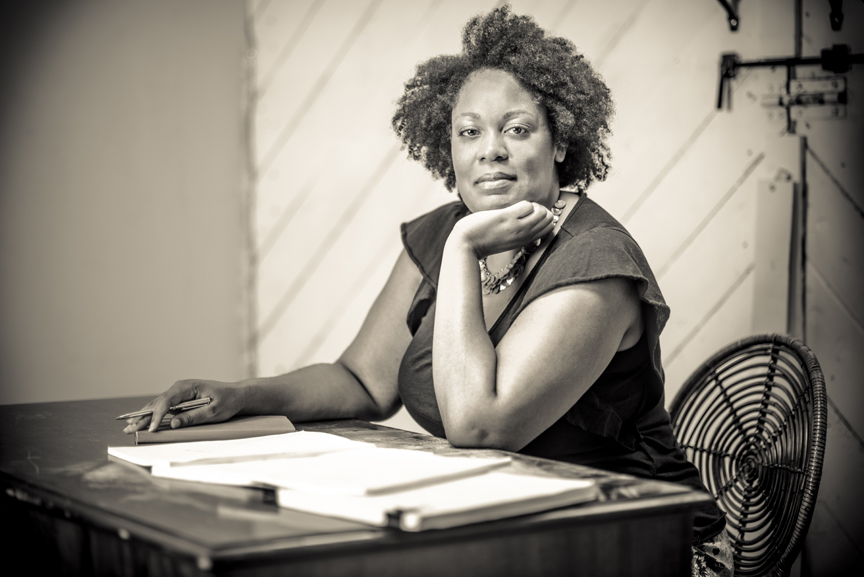|
Anu Yadav's MEENA'S DREAM opens tonight at Forum Theatre. In this beautiful solo performance, Anu is accompanied by three musicians who perform a live blend of South Indian classical music and American jazz. Anjna Swaminathan plays the violin, Rajna Swaminathan plays both the mrudangam (South Indian percussion) and piano, and Sam McCormally plays the guitar and piano. Click here to listen to music from the show. Last week, I had a chance to speak with Anjna about her work as a dramaturg and composer on the play. Please enjoy! 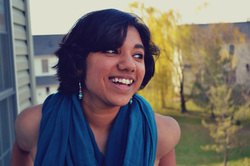 JACQUELINE LAWTON: Why did you decide to get into theatre? Was there someone or a particular show that inspired you? ANJNA SWAMINATHAN: I think I had always been theatrical as a child. I grew up in an artistic family, and was constantly surrounded by South Indian music and dance, both of which are grounded in narrative and emotional expression. My mother was a singer, dancer, and actor, so storytelling became a major part of our lives at home. I didn’t quite understand that it was my calling, however, until my senior year of high school when I started acting in the school musical. I immediately fell in love with the craft as an actor, and on a whim, decided to major in theatre at the University of Maryland. A few months in, I started to notice the epic lack of South Asians on stage and soon realized that if I were to act, there were too few compelling roles and too many stereotypical ones. It was at this point of existential confusion that I met two incredible women who encouraged me to reconsider the potential I had to be a theatre artist. The first was Anu Yadav, the playwright and performer of Meena’s Dream. She was the one who made me look at theatre not as something historical, but as a living, breathing, contemporary art form that has to grow and change. If I didn’t see relatable characters on stage, I could create them. It seems so simple now, but at the time it was mind-blowing. During my sophomore year, I started taking performance studies courses with Professor Faedra Chatard Carpenter, who soon became my mentor and introduced me to some of the deeper, sociological aspects of performance like critical race, gender, and queer theory, and later to the word “dramaturgy.” JL: How do you define dramaturgy? Or explain to people about the work that you do? AS: I don’t think there is really a way to define dramaturgy, because the duties of a dramaturg transform with each project. I am a very young dramaturg—I really only got introduced to the term a few years ago—so, I myself am still figuring it out. That’s sort of the beauty of it—each dramaturg is different and gets to decide what his/her dramaturgy is. I have been fortunate to work with playwrights, directors, and choreographers, who are also relatively unfamiliar with the term. It’s been a fascinating journey of using the creative process to define dramaturgy for the artists I collaborate with, and for myself. More recently, I’ve been describing a dramaturg as a sort of “two-faced therapist.” It’s a strange concept, but I think it really gets playwrights and choreographers to open up about the personal reasons why they feel compelled to create what they create. For the past year, I have been doing my own playwriting alongside my dramaturgical work, which is what forced me to look at theatre as an emotional, cathartic experience, rather than a structural or political one. Theatre is ultimately about the stories of humanity. I know I’m young to make any sweeping judgments about theatre artists, but I do think there is a tendency among those within the field to separate themselves from the inherent emotionality of theatre when observing or critiquing a play. I instead ask playwrights why they need to write what they are writing—not about what the audience needs to learn, but about what the artist needs to release. It’s a very emotional conversation for most, but it reveals so much about the artist’s voice, story, and imagination, and just like the status quo of a play changes from exposition to resolution, so does the artist’s emotional status quo. That’s the first face of the theatrical therapist. The other face is towards the audience. I try to put myself in the shoes of any audience member who could walk into a theatre. What would they feel, what assumptions do they walk in with, how can we change them and move them? I also ask myself what their political standings may be, as most of the work I am involved is tied to some larger social issue. This is where the emotional part becomes critical. It’s one thing to create a theatre piece that is a jargon and factoid-loaded political rant, but it is another thing to tell a simple story that just happens move someone towards social change. JL: How long have you lived and worked as a dramaturg in DC? What brought you here? Why have you stayed? AS: First, a disclaimer: I graduated from the University of Maryland less than a month ago, so I’m still figuring out this whole “living and working as a dramaturg in DC” thing! I grew up in a small suburb in Maryland, and was relatively sheltered from cities like Baltimore and DC. Most of my artistic work as a young musician was among artists in the Indian-American community in Maryland, so my interaction with the arts in DC is very recent. With theatre, however, the DC scene is so rich with diversity and experience. For a few months, I seriously considered moving to Minneapolis, MN after college—I’ve been working with a dance company there for four years and have always loved the theatre scene there. I decided to stay here because what DC has (that many other places lack) is community and a multi-cultural tapestry. There are so many people here with such widely and wildly different stories, that I would really miss it. I think part of it is also the audience. Theatre has always been a bit paradoxical in that no matter whose story is on stage, it is usually upper middle class white Americans that attend shows. A lot of theatres in DC are challenging that… Forum Theatre, where we are producing Meena’s Dream, just began a new initiative, Forum4All, whereby audience members pay whatever they can. The conversation between diverse artists and diverse audiences is so important for building social consciousness and that’s what I love about DC. I’m sure I’ll travel and work elsewhere in the future, but for now, I feel too rooted in DC to leave! JL: What skills and traits do you feel a successful dramaturg should have to support the development of a new play or a production? AS: Experience: I think to really offer insight into a new play or production, a dramaturg has to have had at least some experience being on the other side. I started writing my first play a year ago, but in the process I have become a much better listener. I use my own struggles with plot structure and character development to understand and help the playwright. Compassion: Theatre artists all around have a duty to understand the perspective of the protagonist, the antagonist, the chorus, etc. You really have to feel what every character feels. In the same way, the dramaturg has to connect to all perspectives – that of the playwright, that of the director, that of the cast, that of the audience, and that of the critics. Open-mindedness/Humility: It is easy to go into a project with a vision of what theatre is, but if you allow yourself to learn from each project, you and the playwright/director can grow together. Going into a project with a mission of proving a point will get you nowhere. (I say this from experience, so I guess it’s also important to accept mistakes.) 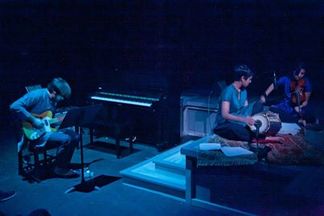 JL: In addition to serving as dramaturg, you also composed music. Can you tell me about your process? AS: This was the first project where I had to reconcile my musical identity with my theatrical identity, and I really thank Anu for giving me that opportunity. It had to happen at some point! I am trained in South Indian classical (Carnatic) violin, and have been working with several dancers and dance companies as a musician and composer for the past five or six years. There is a word that connects almost all Indian arts: rasa, which means emotion or expression. Carnatic music is composed of several ragas or melodic modes, each of which tells a different emotional story. This is what draws me to make music for dance and theatre – the emotionality. When we were in rehearsal for a workshop production of Meena’s Dream at UMD, director, Paige Hernandez, who had had previous experience with Indian dance, asked us to look for rasas instead of beats. That’s where I started to envision the process of composing for this play as a theatrical process. The style of the score comprises Carnatic music, contemporary jazz, and indie folk. The other two musicians are my sister, Rajna Swaminathan who switches between mrudangam (South Indian percussion) and piano, and Sam McCormally, who switches between guitar and piano. As the only purely Indian melodic voice, I see my violin’s role almost as another character in the play, with her own journey as she moves the plot along. JL: Why is music so integral to this story? AS: Anu has created an aesthetic world that travels between the real and the fantastical, and later, blurs the two. Just like lights and projection can turn a drab bedroom into a surreal dreamscape, the music is what carries young Meena into her own psyche. We’ve had so many discussions about what exactly the music represents—is it Meena’s emotions? Is it her imagination? Is it her mother’s voice? I think in a way, the music is all of these things and more. It doesn’t always go perfectly with Meena’s emotional journey, but complicates it. The music brings different tones and colors to the theatrical landscape that is so artfully described in the text. Does the play stand on its own? Definitely. But music resonates with audiences in a very visceral way, and we want them to feel the sorrow, the fear, the worry, and the inexplicable ecstasy, that Meena feels. JL: What excited you about working on Meena’s Dream? AS: In terms of my research interests, it was the fact that Anu was bringing together my two favorite things, spirituality and social change, and making an ancient spiritual text like the Bhagavad Gita extremely relevant to the external and internal battles we are all facing today. Two years ago, I saw a very early draft of the piece, which Anu performed as an assignment for her MFA program at UMD, and I immediately knew I wanted to do something for it. We had already discussed a musical score, but I wanted to be involved in the development of the script, and as I recall, it might have been me who asked if I could dramaturg it! In terms of my own growth as a dramaturg, this play sort of sandwiches my dramaturgical career. It was the first show that I started dramaturging and I am still dramaturging it! I also got to interact with other dramaturgs during the process and really observe and engage in the development of the play. My role began as a research dramaturg, and development dramaturgs Caleen Jennings and Patrick Crowley were also a major part of the process. On a personal level, at the time, I was going through my own journey of spiritual growth as I tried to cope with life and the loss of my own mother. That initial draft about a young girl facing her mother’s illness resonated with my own story so much, that I sort of needed to be part of it to grow as an artist and as a person. In a way, being involved in this project asked me to see how our own stories can help and heal others. JL: What do you hope audiences are thinking about after experiencing this play? AS: Hope. I want people to leave with an overwhelming sense of hope. There are so many plays geared towards social change that end on a sad note, almost as though we’ve given up on fighting for what we believe in. Meena’s Dream is far from bitter and the innocence of a child with a sparkle in her eye is far from naïve. We have so much positivity in us as children that slowly gets depleted as we grow up. My hope is that people will leave the theatre with a smile on their face, a sparkle in their eye, and the desire to dream again. JL: What’s next for you? Where can we follow your work? AS: It’s funny. I just graduated, and have yet to get bored of this question! I am continuing to work as a freelance composer/musician and dramaturg, but right now, I’m exploding with ideas and excited to find my niche as a playwright. Wherever the world takes me, I will always be some kind of artist, and I am looking forward to continuing to affect people with art. You can follow my work at www.anjnaswaminathan.com! 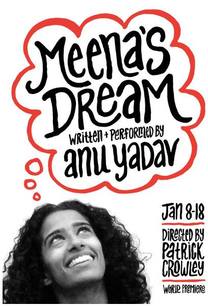 MEENA'S DREAM Written and performance by Anu Yadav Directed by Patrick Crowley Music by Anjna Swaminathan, Rajna Swaminathan, and Sam McCormally January 8-18, 2014 Click here for a full list of performance dates and here for ticketing information About the Play During the day, nine-year-old Meena wishes that her mother could get well; and by night, the Hindu God Lord Krishna appears, entreating Meena's help in his war against the Worry Machine. Meena's Dream creates a fantastical world through storytelling and live music, from South Indian classical to indie folk. 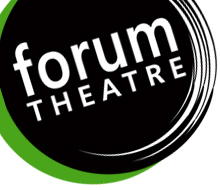 Forum Theatre produces adventurous, relevant, and challenging plays from a diversity of voices that inspire discussion and build community -- and that are accessible, affordable, and entertaining. Since Forum Theatre’s inception, we have aimed to be both the home for stories that provoke discussion and the place to host that discussion. We want our plays to be a conversation with the audience. We tell stories about who we are as a local, national, and global community. So what is a Forum show? That’s never been the easiest thing to describe, but a few things tend to always be true: A Forum show asks big questions. A Forum show is intricate and challenging, but has a big heart at its center. And a Forum show gives you something to think about and a lot to talk about.
0 Comments
Your comment will be posted after it is approved.
Leave a Reply. |
My BlogI'm a playwright, dramaturg, and teaching artist. It is here where you'll find my queries and musings on life, theater and the world. My posts advocate for diversity, inclusion, and equity in the American Theatre and updates on my own work. Please enjoy!
Categories
All
Archives
June 2020
Reading List
|
